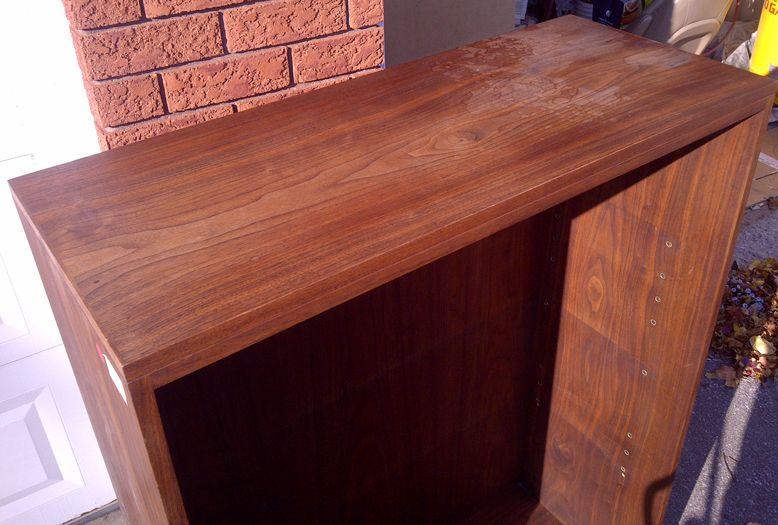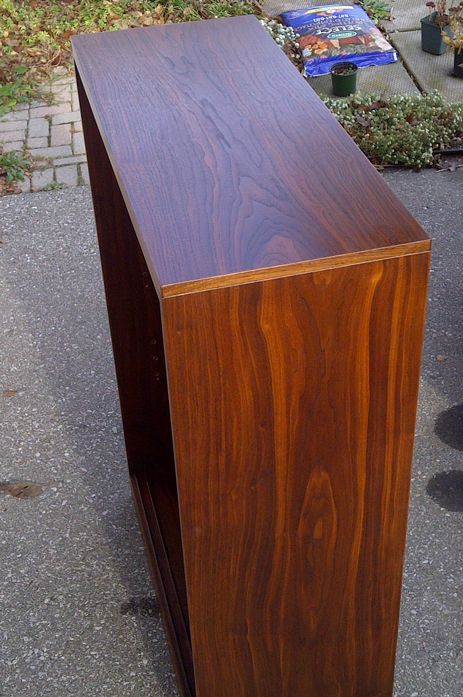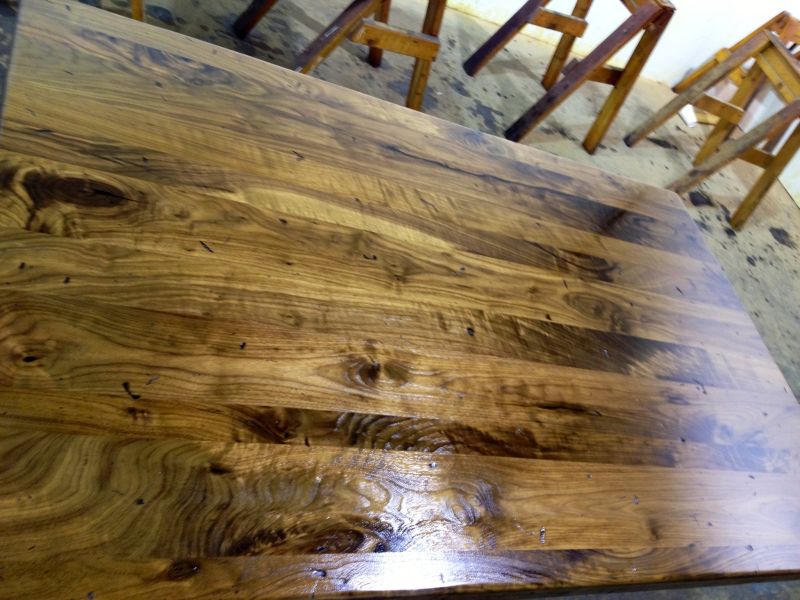Question
Any tips on using oil finishes? Normally I am a lacquer guy. I have a client that wants to put an oil on a walnut table.
He didn't know what he wanted so I got a bunch of them:
Watco Teak Oil
Watco Danish Oil
Wood River 100% Tung Oil
Boiled Linseed Oil
So far I made some walnut test pcs about 6 x 10". I used two pieces for each oil, as I plan on showing them to him oil only and oil with a lacquer topcoat. I followed the instructions on the container.
Teak and Danish oil was apply heavy, let soak for 1/2 hour, making sure it didn't have any dry spots. Soak it again for 15 minutes and wipe dry.
Tung oil was thinned 50% with VM&P Naphtha and put on heavy, let soak for 15 minutes and wipe dry. Going to let dry overnight and repeat 2 more times without thinning.
BLO was thinned 50% with VM&P Naphtha and wiped on heavy let soak for 15 minutes and wiped dry.
So what's next? Do I just wait for it to dry a few days before I apply a finish coat? Or do I reapply the oils a few more times? Am I buffing the oil? I don't plan on any wax on any of them.
Forum Responses
Tung oil requires reapplication every six months or so, as needed. If one lets the finish dry out or open up, it requires starting over with the process. BLO is not in the same ballpark as TO.
I have never sprayed lacquer over tung or boiled linseed, so I can't say for certain, but I would be hesitant with the BLO due to the drying issue. Maybe someone else has experience on that.
There are people who post videos to the internet and make it appear as if Waterlox is easy to apply with a foam brush, but you'll get results that are about on the level of what you would expect from a painting contractor. I tried spraying it once, and that did not work too well.
I am a big fan of Watco Danish Oil. It is simple, foolproof, and readily available. There is no way you can possibly screw up provided you wipe the excess thoroughly.
I generally sand the wood to 320 or 400 grit to burnish the surface, soak the wood for a while, wipe thoroughly with painter's rags. Keep an eye on the surface for at least 4-5 hours and wipe as needed, since oil may continue to bleed. Sometimes I will wet sand on the first or second coat with oil.
Allow at least 24 hours of dry time and repeat until you are satisfied. In some cases I will apply paste wax and buff after about a week, however I would skip the wax on a coffee table that is going to see use.
I built a white oak coffee table and finished with Danish oil and it has done really well over the last 5 years. I actually use it, and it does see some wear and tear. The dead flat sheen does not show scratches. I even had a container of some kind of lemon gelato leak and melt all over it. This mess sat overnight, and it did not do any harm, which surprised me as it seemed somewhat acidic. At some point, I will renew the finish by simply wiping on another coat with a painter's rag.
Now before the post cat and conversion finish aficionados call BS, I am not saying an oil finish is always appropriate, and unless it is desirable for whatever reason, I spray lacquer or CV.
Several years ago, I used BLO to pop grain on some gumwood doors (after stripping off layers of paint). Waited a couple days, then sprayed a couple light coats of Target shellac and then their hybrid varnish (now EM2000) and I had a very happy client.


Sand to 320 grit and rub the raw wood with some 00 steel wool. You'll close the pores a little with the steel wool, so thin the first coat of Waterlox Original Sealer with about 25% mineral spirits for good penetration. Apply it with a rag, rubbing it into the surface initially then re-wet the rag and top it off with a fairly heavy coat. Most of that will absorb into the wood after several minutes, but don't worry about wiping the excess off.
Put a fan on it and check it after a few hours. If it's no longer tacky, apply another fairly heavy non-thinned coat (a little lighter on any vertical surfaces to avoid running) with a rag without sanding in between. The second coat should be fairly uniform but doesn't have to be perfect, as the Waterlox Sealer will self-level. The second coat should cure overnight.
Next day, denib with 320 and rub with 000 steel wool. Clean and apply a another coat, thinned with 10% mineral spirits. Use a fan and check after a few hours. If no longer tacky, apply a full strength coat without sanding in between. Leave overnight.
The next day you may find the build is thick enough, but if not, repeat day two again until you're satisfied with it.
Once the build is where you want it, the Waterlox will have a glossy sheen. This will deaden slightly after 30 days or so. If the sheen is too high, let the last coat cure for at least 24 hours (48 would be better), wet some 0000 steel wool with mineral spirits and rub the entire surface with medium pressure to give a duller satin sheen.
It may take a little practice but your customer will love the deep, rich grain of the walnut. If there's any figuring or burl in the wood, it will definitely pop beautifully.

